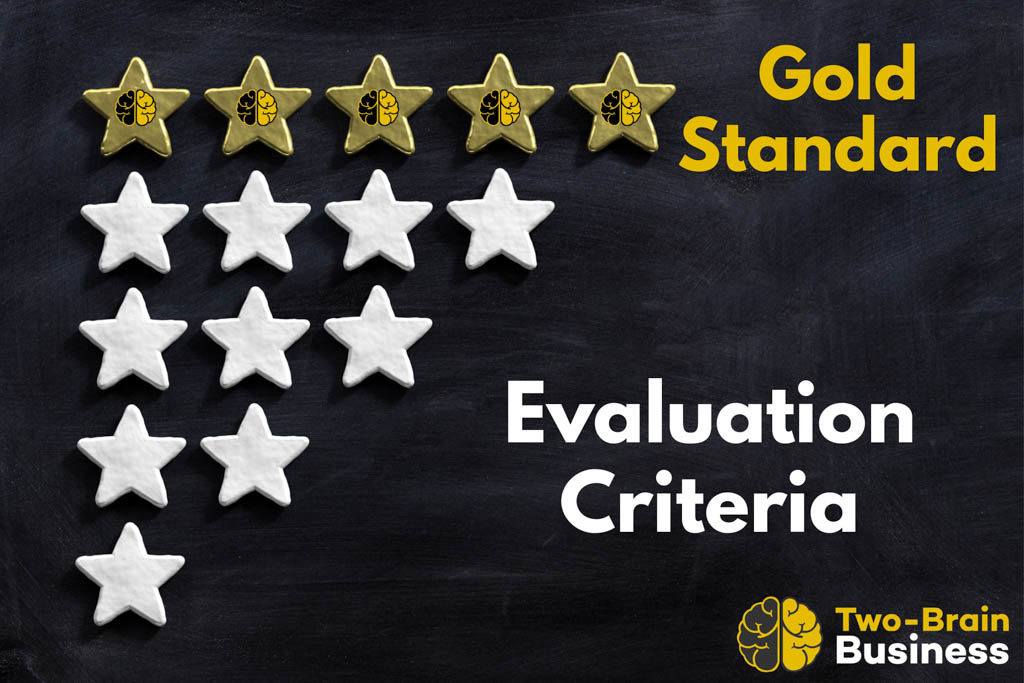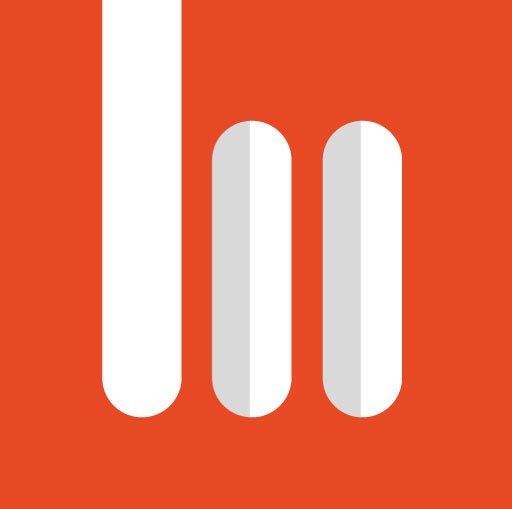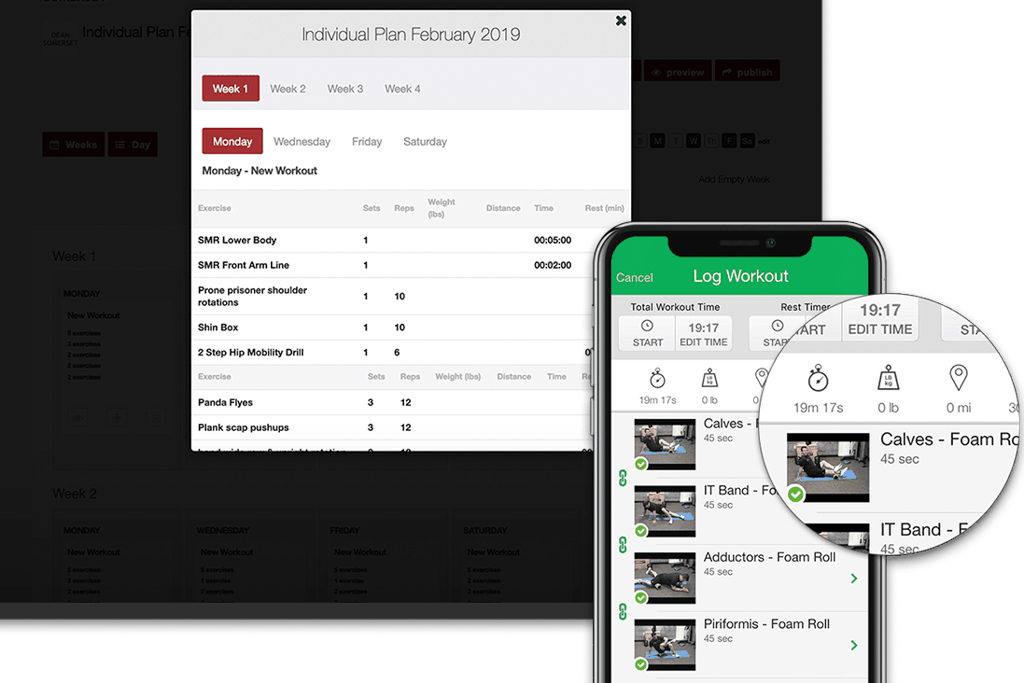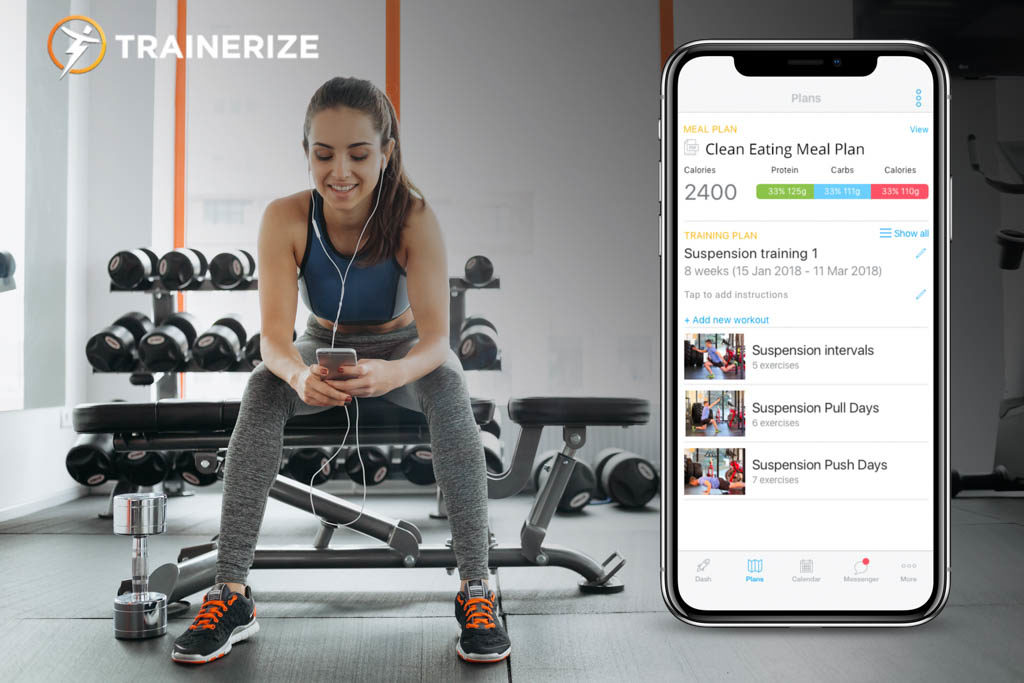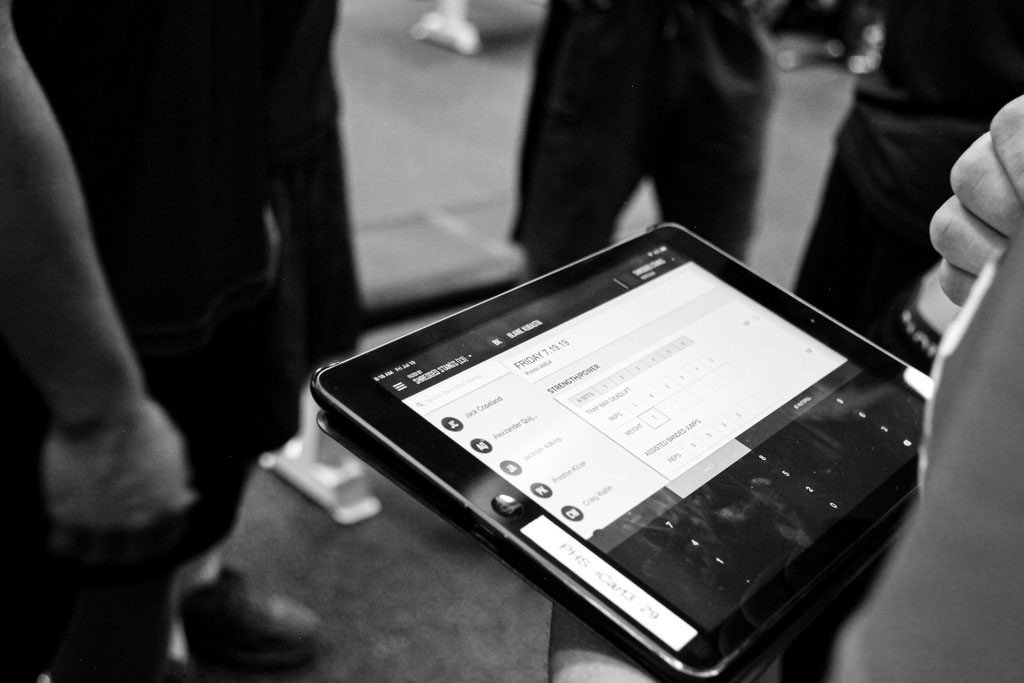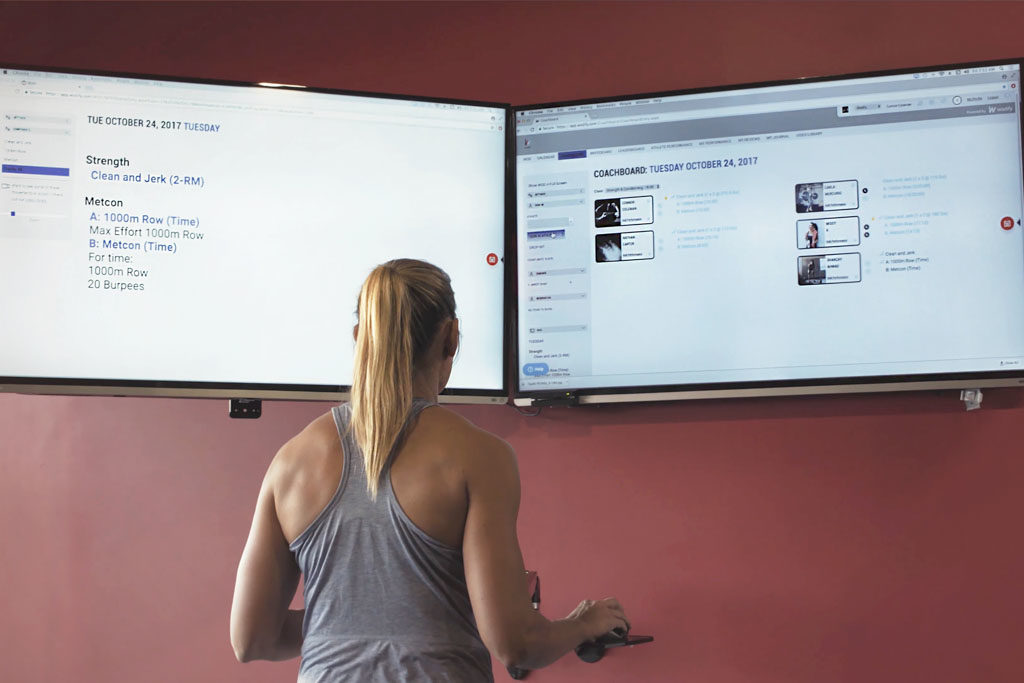What is the best software for coaching your clients?
A few months ago, we published an objective review of gym management software. We invested $35,000 and many hours to evaluate and rank the six best software platforms for running a gym business.
We received a lot of great feedback on the article from gym owners, and several companies contacted us to let us know they were working on improvements that would bring their products closer to our standards.
But gym owner and coach are different jobs that require different tools, so a separate review of coaching software is more than warranted.
Software That Solves Problems
The largest problems facing gym owners: attracting clients and retaining them.
We’ve got marketing and intake systems that help solve the first problem, and we’re constantly helping gym owners hire staff and implement processes to increase length of engagement.
In essence, retention comes down to helping your clients get results and then showing them those results over and over again. Retention is less affected by having fun, making friends, following the best programming or having the best community. Results are what really matter.
As a microgym owner, if you can show that you’re providing results for your clients, you’ll stand out from the “experience” gyms like Orangetheory Fitness and SoulCycle.
Unfortunately, results haven’t always been the focus of the fitness industry or the software companies that build our online tools.
We hope this review will help change that. To start the process, we evaluated seven platforms in detail: CrossFit btwb, Exercise.com, SugarWOD, Trainerize, TrainHeroic, TrueCoach and Wodify.
In the meantime, we’ll keep supporting the community with mountains of free content, advice and data people can use to grow their business and create their perfect day.
Now, on to the software.
Key Elements of Coaching Software
To help the microgym owner, coaching software should be designed to produce and track results.
To determine the best software tools for coaches, we need to know two things:
1. What results our clients care about. Clients come to gyms to solve problems. So what are those problems?
2. The best way to measure and show off results. Once we know what problems clients have, we need to know how we can prove that our businesses are solving those problems. We need to measure progress and then illustrate that progress for each client.
What Do Gym Clients Care About?
Gym clients care about exactly three things: They want to look better, feel better and perform better.
Each client has a different combination of goals, and not all clients care about all three.
For example, a client who wants to look better might want to lose weight, gain weight, tone up or get a six pack.
A client who wants to feel better might want to have more energy or notice improvements in mood.
A client who wants to perform better might want to improve at a specific sport or be able to lift his or her kids.
Most coaching software in the microgym space focuses solely on performance. A few focus on looking better (by measuring weight or body fat). Almost none focus on feeling better.
Software needs to be able to track and report improvements in all three areas if it’s going to help a gym serve all clients.
The Best Way to Measure and Show Results
Compliance
Once you’ve figured out a client’s goals, you need to figure out the best way to accomplish them.
Successful fitness programs have three key elements: training, nutrition and recovery. Coaching software must be able to track all three.
That said, the number one thing that determines a client’s success at the gym is compliance. The program, coach and equipment don’t matter if the client doesn’t show up.
How many times did the client show up and complete a workout?
How many days did he or she follow a nutrition plan?
How many days did the client get the recommended amount of sleep?
In order to get the client to continue showing up and sticking to the plan—compliance—you must keep him or her motivated.
We know motivation follows success, so we need to show the client that the program is producing results: quick wins that produce the motivation to keep going.
That means we need to track a second thing in addition to basic compliance: bright spots.
Bright Spots
How many days in a row did the client show up?
Has he or she earned a PR? Bright spots can include a new load lifted, the first successful performance of a movement, the first successful completion of a benchmark test, and so on.
Has the client lost or gained weight or body fat?
Has the client’s mood improved over time?
How does the client compare against himself or herself six months ago or a year ago?
Does the data reveal other positive things the client is doing well
Highlighting bright spots will keep clients motivated, making progress and showing up. Trainers need software that tracks bright spots and makes it very easy for clients to see progress. Also important: the ability for the coach to note the bright spots and offer congratulations, high fives and fist bumps right on the platform.
Coaching Software Evaluation Criteria
Our coaching software evaluation is broken down into five different categories.
Function—Does the software fulfill the needs described above? Will it track data that shows how people look, feel and perform? Does it track training, nutrition and recovery data?
Reporting—Are the reports useful? How easy is it to find the data you need? Can you create and run your own reports? Does the software highlight bright spots for you and your clients? Can clients see progress through the software even if they can’t see it in the mirror?
Usability—Is the software easy to use by the owner and the trainers? How about by the clients? Is there an app? What about the user interface (UI)? Does it make you feel warm and fuzzy when you open it or does it give you a headache? The product’s look and feel also factor into its usability.
Communication—Can coaches and clients communicate easily? Does the software allow emailing and texting? Are you forced to use the app for all communications?
Integrations/Bonuses—Does the software platform play nice with others? Does the program integrate with other tools a gym owner or coach would use? Does it have an open API so you can add things as you see fit? Does it have any bonus features that make it stand out?
Need more advice on common problems? Click here to book a free call with a certified Two-Brain Business mentor.
The Seven Coaching Software Platforms
We evaluated seven platforms in detail:
We chose not to review several other platforms.
Strava—This is the top exercise-tracking app in the world. It provides an amazing experience for athletes both during and after exercise. Most tracking apps only provide feedback after a workout; Strava makes the workout feel like a game. But there’s no coaching platform on Strava yet.
TrainingPeaks—This solid coaching software is primarily focused on distance athletes—cyclists, specifically.
Zen Planner—This gym-management software offers workout tracking, but its parent company recently acquired SugarWOD, which we reviewed in detail.
The Platforms
CrossFit btwb
One of the most-established workout-tracking platforms, btwb has evolved over the years and is now the official CrossFit app.
Function: 8
This platform does a ton of stuff. You can create group workouts and individual workouts and track lifestyle markers such as sleep, hydration, mobility work and even fish-oil intake. Workout tracking is thorough and detailed.
Reporting: 8
CrossFit btwb offers tons of reports: You can track overall gym performance, individual PRs and performance, weaknesses, imbalances, etc. You can also see how fit you are based on an overall ranking and use the leaderboards.
Usability: 5
This is where the system struggles. CrossFit btwb has lots of clicks and confusing screens on the website, and entering workouts is not super easy. The company acknowledges this and offers a service that will enter workouts for you based on a spreadsheet. The app is a lot better, but the number of options feels overwhelming.
Communication: 6
Limited options here. You can push workouts to your clients and comment on their scores, but that’s about it. You can’t send individual messages to clients, and the social feed can only send emojis. For some reason, you can only communicate with your friends if you create a squad rather than communicate with the whole gym.
Integrations/Bonuses: 6
You can automatically add programming to your gym from lots of different vendors, and CrossFit btwb integrates with WordPress. You can easily export data, but it would be nice if the platform had an open API or Zapier integration.
Cost: $80-$250 per month.
Exercise.com
Originally a system for logging individual programs, Exercise.com has recently expanded as a business-management software.
Function: 8
Now an all-in-one solution for coaching and business management, Exercise.com allows coaches to create programs and workouts for 1:1 clients and groups. You can easily add your own exercises, videos and movements. The platform integrates with MyFitnessPal, and you can track recovery metrics using assessment questions, measurements and progress photos.
Reporting: 7
Users can generate reports based on attendance, measurements and workout performance. The platform has a handy “snapshot” mode in the client profile so users can see all completed workouts and stats for each client.
Usability: 6
Exercise.com’s online interface is functional but basic. It can be hard to navigate, but you are able to add workouts and create programs fairly easily. The robust nature of this software means it’s tough to use/navigate until it’s tailored specifically for you, and a customer-service team will set up a custom app with just the options you want after a discovery call.
Communication: 6
Limited to email and in-app alerts. We would love to see a text notification and a client communication dashboard.
Integrations/Bonuses: 7
Exercise.com does not offer an open API, but users can connect to Mailchimp and ConvertKit to send broadcast and autoresponder emails, Stripe for payments, MyFitnessPal for nutrition, and Zapier for just about everything else.
Cost: $199-$499 per month (pricing is for the entire system, including gym management).
Overall: 34/50
SugarWOD
SugarWOD started as a way to post programs for group classes and interact with members on a social platform. In May 2019, SugarWOD was acquired by Daxko, parent company to Zen Planner.
Function: 5
With regard to workout tracking for gyms, SugarWOD is a solid 8. Unfortunately, it doesn’t offer 1:1 programming or nutrition tracking. For a gym that only offers group fitness coaching, this is a great solution. But we’ve seen many gyms move toward more personal fitness and nutrition coaching, and we need software that works in these applications as well.
Reporting: 6
The reports are minimal, but—refreshingly—SugarWOD does focus on bright-spot metrics such as attendance and PRs without excessive emphasis on technical details. The reports for on-ramp athletes, benchmark improvement, PRs and so on are all useful for coaches.
Usability: 8
Ease of logging is the number one issue with coaching software, and SugarWOD does a great job with a simple app and straightforward interface. Entering workouts is very simple as well. We’d love to be able to easily fist-bump or direct comments to people on a list (as in a Facebook feed) instead of using extra clicks for each task.
Communication: 6
It’s straightforward: Everything goes through the app. People can get notifications, but SugarWOD does not provide text/email options or messaging.
Integrations/Bonuses: 6
SugarWOD has an open API, so it will send data to a variety of systems if you know how to code. It also has a workout marketplace so other programs can be delivered directly through the system. Native integration is limited to Zen Planner, PushPress and a couple of other systems.
Cost: $19-$119 per month.
Overall score: 31/50
SugarWOD is a good app for group-class management, and it’s very strong on usability when logging workouts.
Chris Cooper’s notes: We’ve been using SugarWOD at Catalyst for years, and I look forward to chatting with its founders every year at the Games. They’re great people, and they provide a constant reminder that software companies should focus on doing one thing really, really well instead of trying to be everything to everyone. I hope SugarWOD’s founders (Drew and Shayna Larsen) can help Zen Planner raise its game. They’re amazing people and very smart.
Trainerize
Pure coaching software, Trainerize is mostly focused on personal trainers in a 1:1 setting. Chris Cooper uses this at his gym, Catalyst.
Function: 7
Trainerize offers lots of great functions. You can create custom programs, custom exercises, nutrition recommendations, goals and groups. The platform features a coaching app and a member app, and you can assign programs and charge for them using Stripe. One big drawback is that a person with a group program can’t receive individual programs, which prevents customization of programs for individuals who are part of a bigger group.
Reporting: 8
Reports are available for workouts, nutrition, weight and sessions, and Trainerize allows you to send automated messages based on the reports.
Usability: 6
Smooth, for the most part. Nothing is super confusing, but the volume of options makes it tough to know where to begin. The overview videos really help when you’re getting started.
Communication: 7
Trainerize really focuses on communication with in-app alerts and the ability to call or email a client directly from the app. The program even integrates with other systems to allow video calls.
Integrations/Bonuses: 7
You can integrate Trainerize with MyFitnessPal to track calories/macros, Fitbit to track steps, YouTube or a video drive to store your exercise videos, and Zapier for everything else.
Cost: 0 to $270 per month.
Overall: 35/50
TrainHeroic
Developed by coaches for coaches, TrainHeroic started as a training marketplace and was built into a full training system.
Function: 7
TrainHeroic offers lots of fun stuff. You can enter workouts or entire programs for a group or individuals, and you can define as many groups as you want for different purposes. It also asks questions about readiness and mood before each session, but unfortunately it doesn’t track anything related to nutrition.
Reporting: 6
The reports are pretty basic but focus on the things we care about, including compliance, readiness, history and performance.
Usability: 8
TrainHeroic offers a simple, straightforward interface. It’s easy to create a workout and a program, and it’s easy and even fun to log workouts as an athlete. When athletes start a session, the platform asks them several questions to assess readiness, then starts a timer for the entire session. Users log the scores, then TrainHeroic asks them how it went to provide feedback that can be shared with other athletes or coaches. The UI is well thought out, and set-up was easy, too. We were able to go in and add individual workouts for people on the fly by clicking on them. TrainHeroic also has a leaderboard you can post on a screen.
Communication: 7
The platform mainly offers email and app alerts. The notes were simple and clear, and it was easy to see what’s going on.
Integrations/Bonuses: 6
TrainHeroic has the ability to use programs from lots of different coaches through the marketplace. The platform seems to integrate only with Pike13, and it doesn’t have an open API.
Cost: $45-$150 per month.
Overall: 34/50
TrueCoach

Formerly known as Fitbot, this software is focused primarily on the coach, which helps users manage personal-training clients and small groups.
Function: 7
Users can easily add workouts for groups or individuals, and the platform features lots of sections for notes on equipment, nutrition, limitations, planning, etc. TrueCoach offers your clients a good app with messaging and other features, but we would have liked more of a social component to group-training work. As it stands, it seems like communication is only possible between client and coach.
Reporting: 6
Reports seem to be limited to compliance, which is the most critical factor. Clients and coaches can pick a metric to track over time, such as body fat or back-squat weight. This data must be entered separately and isn’t tracked with workouts, but a nice graph can be created over time.
Usability: 7
TrueCoach is pretty simple and easy to use, without a lot of “extras” in the way. The UI is friendly and makes you want to make entries. Users also have the ability to link to their own demo videos, which is handy.
Communication: 8
We liked the messaging app and how the coach can see a feed of all client workouts and messages on one page, like a Facebook feed.
Integrations/Bonuses: 3
TrueCoach does not appear to integrate with anything, help with programming or provide an open API. However, it’s easy to use, so you might not need integrations.
Cost:$19-$99 per month.
Overall: 31/50
Wodify
Wodify is a true “do it all” type of system, with member management, billing and workout tracking all in one. It was also included in our member-management comparison, which you can find here.
Function: 6
Wodify is primarily a gym-management app, with workout tracking built in. At the time, it was a revolution, but more useful workout-tracking apps have appeared. The Wodify system is still solid, and it lets you create and publish benchmark workouts to clients and have them log into the system itself. This creates some unique capabilities in terms of tracking attendance and flagging clients you haven’t seen in a while. The platform does not offer any mood/energy tracking, but Wodify does feature a nutrition journal, and a coach can review the client’s log.
Reporting: 6
Wodify offers basic reports that show benchmark scores, weightlifting numbers, gymnastics performance, etc. It also has a variety of attendance-tracking reports.
Usability: 6
Entering workouts wasn’t as straightforward as we’d like, and the system has tons of options. However, it’s trying to serve two purposes, so we won’t ding it much for the lack of focus. The app is pretty straightforward as well.
Communication: 6
You can email and SMS clients, but they have to opt in. This functionality is somewhat buried in the system rather than at your fingertips.
Integrations/Bonuses: 7
Wodify integrates with a few different systems, it has online programming on offer, and it manages your members. Lots of bonuses!
Cost: $79-299 per month.
Overall: 31/50
Overall Results
1. Trainerize—35
2. Exercise.com—34
2. TrainHeroic—34
4. CrossFit btwb—33
5. SugarWOD—31
5. TrueCoach—31
5. Wodify—31
Conclusion by Chris Cooper
We spent over $30,000 in time and testing to produce this objective guide.
We also don’t accept partnerships from software companies in this space because we want to remain objective.
Our purposes in publishing are twofold:
1. Help gym owners find the best tools—Your key differentiator, as a microgym, is coaching. Big chains, like Orangetheory and the various bootcamps, sell an experience. They have scoreboards and apps. But they can’t plot client arcs from current spots to goals. They can’t provide nutrition coaching or accountability or bright spots. Their systems aren’t built to accommodate 1:1 relationships.
At Two-Brain, we teach gym owners to build their systems around 1:1 relationships. The tools we use must strengthen those relationships. If they don’t, they’re superfluous.
2. Give software companies a target—This is a new one, but our last objective review of gym-management software yielded some pretty amazing results: “The Six Best Gym Management Software Platforms: Our Unbiased Review for 2019.”
As soon as it was published, both Wodify and Arbox made heavy investments to hit our targets. I was really impressed with both. Each said, “We want to win next year.”
The result of that investment will be improved products for gym owners.
I hope that happens here, too.
Stay Tuned
Software companies are product companies. They respond to consumer demand.
The best ones respond quickly; the weak ones die.
Which will evolve with microgyms to provide the best tools?
I have my opinion, but we’ll see.
This review will become even more important every time we do it.
CORRECTION—Sept. 4, 2019: An earlier version of this article incorrectly stated Wodify does not have a nutrition-tracking feature. Wodify does offer a nutrition journal athletes can fill out for review by their coaches.
To find out how mentorship can help you grow your business, book a free call here.


